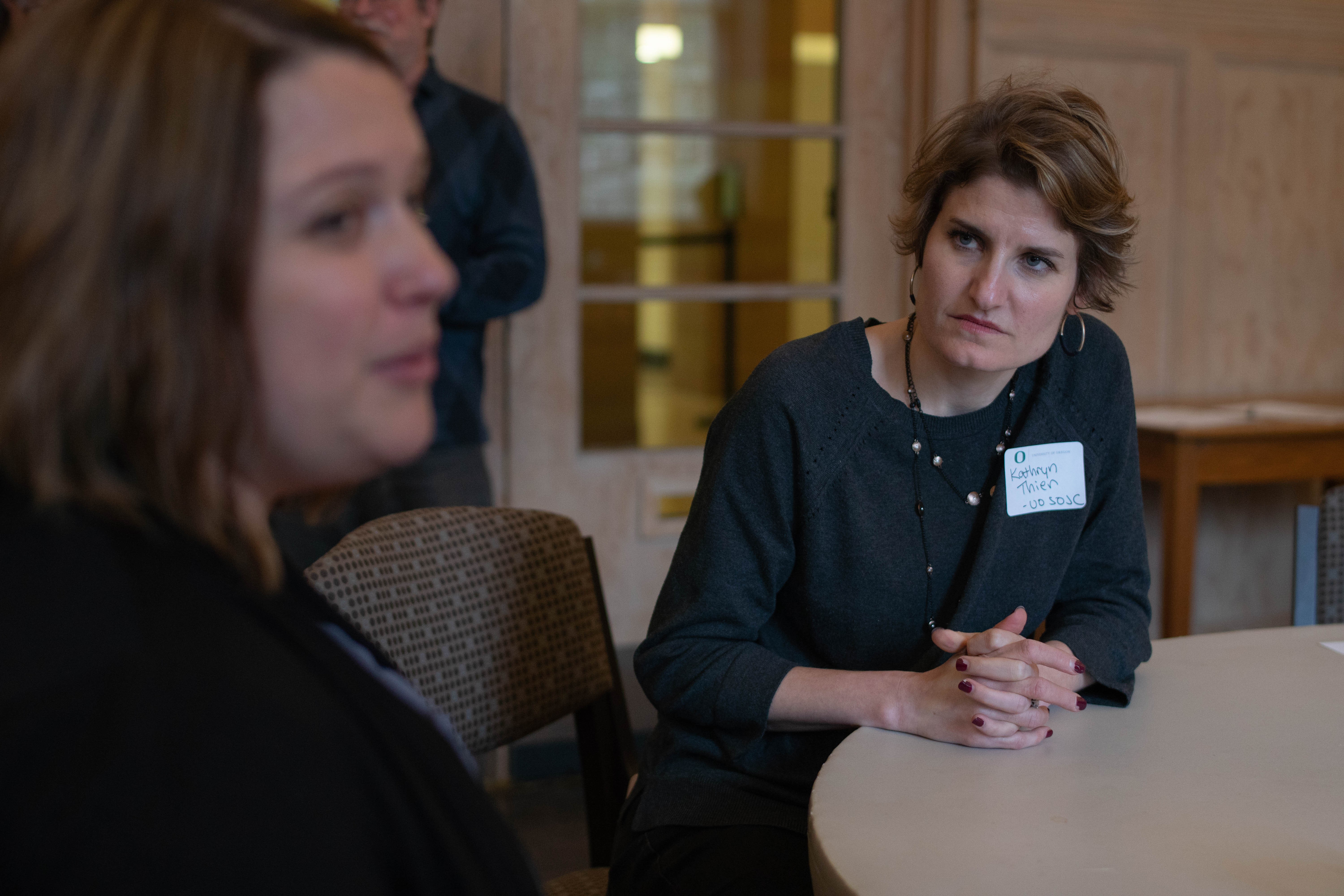Journalists and members of the public gathered at the University of Oregon Knight Library last week for a conversation about the impact of sexual assault in their community, with an emphasis on the effective responses the community has created to combat sexual assault. The attendees seemed hopeful as they participated in round-table discussions about solutions and contemporary interventions that make a difference in the wake of #MeToo.
The #MeToo community engagement event was part of the solutions journalism course at the University of Oregon (UO) School of Journalism and Communication, a university leading the way in teaching courses in solutions journalism.
“There is a trend growing in journalism saying that just reporting on the problems isn’t enough because it leaves readers anxious, depressed and unsure how to respond,” course instructor Kathryn Thier said. This trend has led to the establishment of solutions journalism, which requires rigorous reporting on responses to social problems.
“Instead of feeling depressed when something negative is revealed, you can actually see what you can do about it,” Thier added.
UO’s solutions journalism course is part of the Catalyst Journalism Project, a program focused on developing courses for journalism students that bolster rigorous investigative and solutions reporting. Thier and fellow journalism faculty members Nicole Dahmen and Brent Walth started the project in 2017.

Thier has taught solutions journalism at the university for several years, but has never focused on a particular topic until this course. After watching coverage of the #MeToo movement, she noticed it predominantly centered around the accused as opposed to the survivors, and she questioned whether traditional, problem-focused reporting was actually harming survivors. As the hashtag #MeToo continued to dominate social media, Thier saw an opportunity to apply solutions journalism to the issue of sexual assault.
The course focused on the fundamentals of solutions journalism, along with discussions on the ethics of covering #MeToo, and resulted in six stories about efforts within Oregon to combat sexual assault. The topics include peer-to-peer sex education programs in high school, targeted efforts to deconstruct toxic masculinity and government initiatives to clear backlogs of untested rape kits and provide support to survivors of sex trafficking.
However, like is often the case, the students’ work didn’t stop after their stories published. The #MeToo community engagement event provided the opportunity to move the conversation forward beyond initial reporting.
Students from the course opened the event by revealing what they learned through their reporting about ways to combat sexual assault. It then transitioned to an interactive discussion about next steps.
Erin Leslie, a community member at the event, enjoyed the opportunity to learn about solutions and expressed her frustration with traditional, problem-based reporting.
“Don’t tell me there is a problem unless there is a way to fix it,” Leslie said.
Leslie heard about the event through her boss Meredith Holley, a lawyer and life coach who specializes in helping people report sexual harassment in the workplace, without having to quit their job. Holley was also the focus of one of the solutions stories that resulted from the class.
“When I was going through sexual harassment myself, I was looking for solutions and I didn’t find them for more than a year,” Holley said. “Having a journalistic focus on how to actually solve the problem resolves some of the rhetoric that there is no solution.”

Hannah Kanik, a student in the course, worked with fellow classmates Ariana Sinclair and Ruben Estrada to report on how Oregon was able to clear its backlog of untested rape kits, known as SAFE kits.
“Reporting the story from a solutions angle notifies other states about this solution, so maybe they can adopt it as well and make a lasting, substantial change,” Kanik said.
Considering the impact of journalism is a major pillar of solutions journalism, a field of journalism that is commonly misunderstood as “fluffy” or less rigorous than traditional reporting. However, open forums like the one hosted at UO have the benefit of expelling these myths.
Nolan Good, a reporter from the University of Oregon Daily Emerald, came into the event with the common misconception that solutions journalism was reporters inserting their own opinions about how to solve problems into their work.
After hearing about the process that the students applied to each story, Good was surprised at the rigor of their interrogations, interviews and research. Realizing that it was, in fact, a complex process, he questioned why solutions journalism wasn’t more popular in newsrooms.
“I’m wondering why we don’t do this all the time,” Good said.
Images courtesy of the University of Oregon School of Journalism and Communication.

